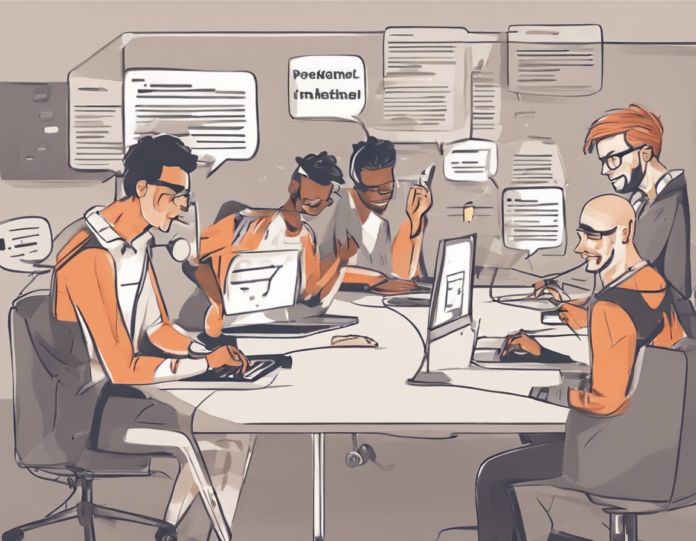In today’s fast-paced business environment, effective communication within teams is essential for ensuring smooth operations and achieving organizational goals. With the growing popularity of channels such as Slack, Microsoft Teams, and other collaboration tools, it is crucial for team leaders to find ways to capture the attention of their team members in these channels to disseminate information, share updates, and facilitate discussions effectively. In this comprehensive guide, we will explore some effective strategies to capture team members’ attention in a channel.
Understanding the Dynamics of Channel Communication
Before delving into specific strategies, it is important to understand the dynamics of communication within a channel. Channels are often bustling with multiple conversations, notifications, and updates, making it easy for important messages to get lost in the chaos. Team members may also be juggling multiple tasks simultaneously, leading to distractions and decreased attention spans. As a team leader, it is vital to be cognizant of these factors when communicating with your team members and tailor your approach accordingly.
Strategies to Capture Team Members’ Attention in a Channel
1. Use Clear and Concise Communication
One of the most fundamental yet overlooked aspects of effective communication in a channel is clarity. When sharing information or updates, ensure that your messages are clear, concise, and to the point. Avoid long-winded explanations or unnecessary details that can dilute the key message. Use bullet points, headings, and formatting to break down information into digestible chunks and make it easier for team members to grasp the main points quickly.
2. Utilize @Mentions and Direct Messages
When you need to grab a specific team member’s attention, use the @mention feature to notify them directly. This ensures that the message stands out amidst the sea of conversations in the channel. For more private or sensitive matters, utilize direct messages to maintain focus and privacy. Direct messages are particularly useful for urgent messages or one-on-one discussions that do not require the entire team’s attention.
3. Establish Channel Norms and Expectations
Setting clear norms and expectations regarding channel communication can help streamline interactions and mitigate distractions. Establish guidelines on when and how to use the channel, response time expectations, and protocols for urgent messages. By creating a structured framework, team members will know what to expect and how to prioritize information within the channel.
4. Utilize Visuals and Multimedia
In a text-heavy environment like a channel, incorporating visuals and multimedia can help capture team members’ attention effectively. Use images, videos, infographics, or GIFs to convey information in a more engaging and visually appealing manner. Visual content can break the monotony of text-based messages and grab the viewer’s attention more effectively.
5. Schedule Regular Check-ins and Updates
To maintain active engagement within the channel, schedule regular check-ins, updates, or stand-up meetings to keep team members informed and involved. These sessions can serve as opportunities to highlight key developments, address queries, and foster a sense of community within the team. By maintaining a consistent cadence of communication, you can ensure that team members remain attentive and informed.
Addressing Common Challenges
While implementing the strategies mentioned above can significantly improve attention capture in a channel, it is essential to address common challenges that may arise. Here are a few common roadblocks and how to overcome them:
1. Information Overload
The sheer volume of messages and notifications in a channel can lead to information overload, causing important messages to get buried. To combat this, leverage search functionalities within the platform to retrieve specific information, encourage the use of thread conversations to keep discussions organized, and create dedicated channels for distinct topics to prevent clutter.
2. Lack of Response or Engagement
In some cases, team members may fail to respond or engage with messages in the channel, leading to miscommunication or delays in tasks. To encourage participation, employ interactive elements such as polls, surveys, or interactive questionnaires to solicit feedback and prompt responses. Recognize and acknowledge active contributors to foster a culture of engagement within the team.
3. Inconsistent Communication Patterns
Inconsistency in communication patterns can lead to confusion and missed messages within the channel. Ensure that you establish a communication schedule or guidelines to maintain regularity and predictability in your updates. Use features like scheduled messages or reminders to prompt team members about upcoming events, deadlines, or meetings.
Frequently Asked Questions (FAQs)
1. How can I ensure that my messages stand out in a busy channel?
To make your messages stand out, use @mentions for direct notifications, employ visuals or multimedia for visual appeal, and craft succinct, attention-grabbing subject lines.
2. What is the best approach for sharing urgent information with my team in a channel?
For urgent information, utilize direct messages for immediate attention, leverage channel norms to designate urgent messages, and consider using high-priority labels or flags to highlight critical updates.
3. How can I encourage active participation and engagement within the channel?
Encourage active participation by fostering a culture of collaboration, recognizing and rewarding engagement, facilitating interactive discussions, and creating opportunities for team members to share their input and ideas.
4. What are some best practices for organizing information within a channel?
Organize information by creating dedicated channels for specific topics, utilizing thread conversations for in-depth discussions, implementing tags or labels for easy categorization, and periodically archiving or cleaning up irrelevant content.
5. How can I balance informative messages with avoiding information overload in the channel?
To strike a balance, prioritize essential updates, use formatting techniques to structure information effectively, avoid duplication of messages, and leverage moderation or curation tools to filter content and streamline information flow.
In conclusion, capturing team members’ attention in a channel requires a strategic approach that considers the dynamics of communication, utilizes various tools and techniques, and addresses common challenges effectively. By implementing the strategies outlined in this guide and being mindful of best practices, team leaders can enhance engagement, improve information retention, and foster a cohesive and communicative team environment.

